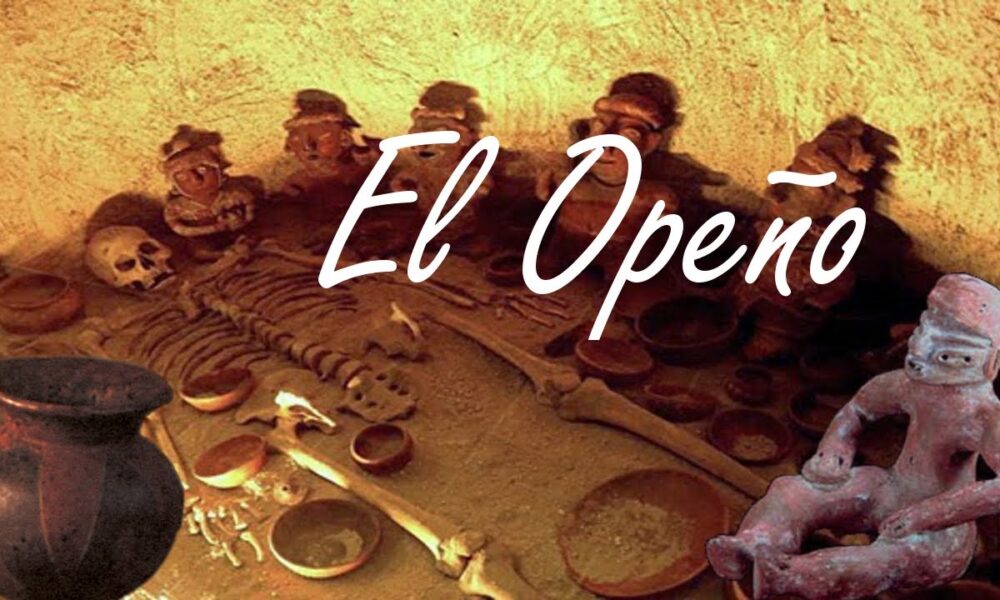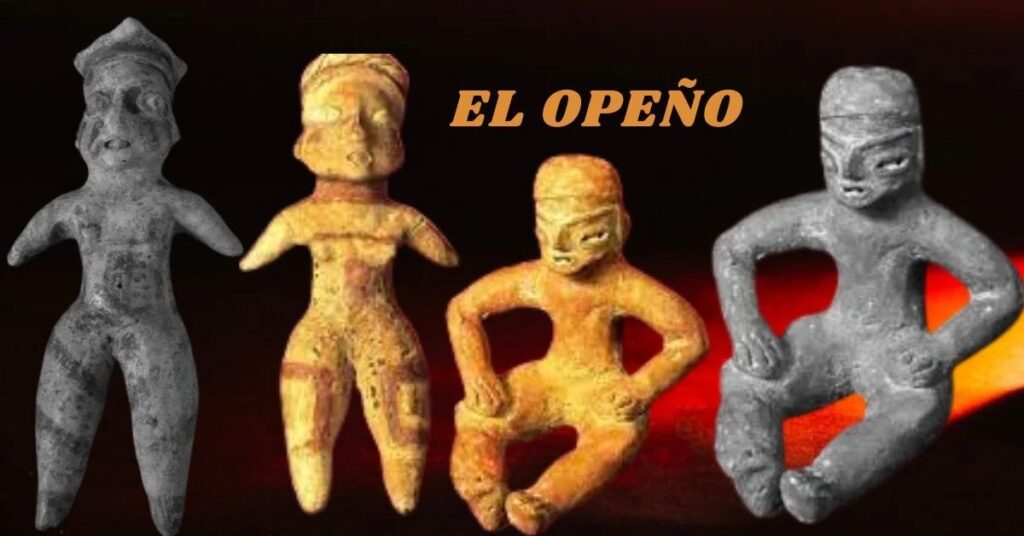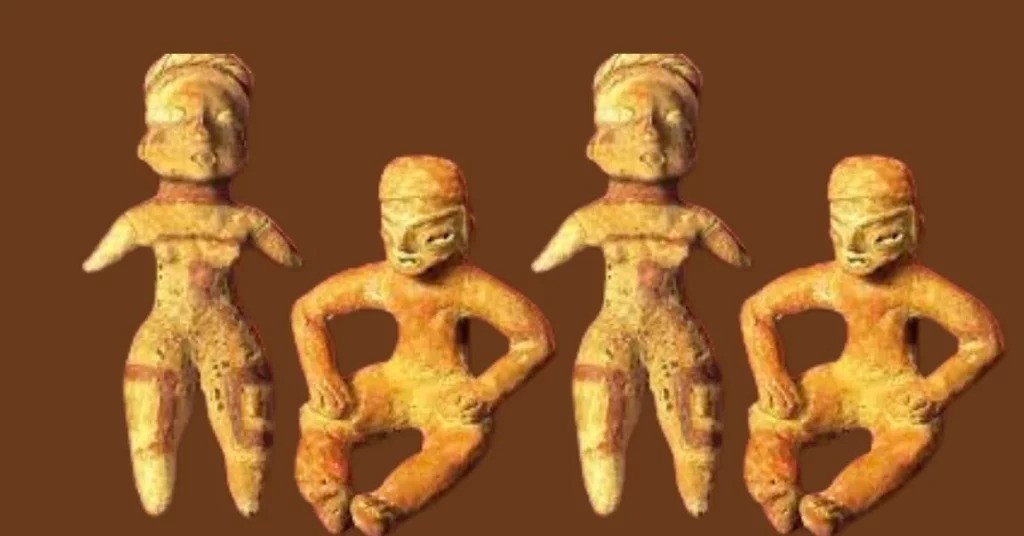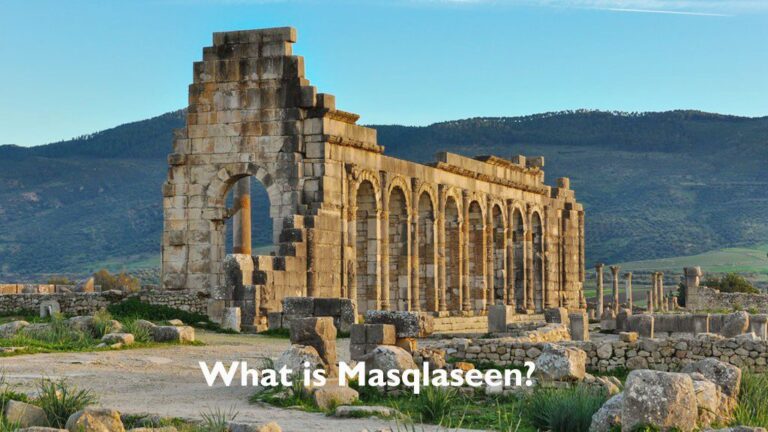Nestled amidst the rugged terrain of western Mexico, El Opeño stands as a testament to the rich cultural heritage of Michoacán. In this comprehensive guide, we embark on a journey to uncover the mysteries of El Opeño, delving into its history, marveling at its architectural wonders, and savoring its culinary delights. From ancient civilizations to modern preservation efforts, El Opeño beckons us to explore the depths of its legacy.
Unearthing the Past: The Historical Significance of El Opeño
The story of El Opeño began to unfold in 1936 under the careful excavation of American archaeologist William Niven. His efforts led to the discovery of an ancient Mesoamerican site that would captivate the attention of scholars and historians for decades to come. Initially thought to be a burial mound, further excavation revealed a complex network of structures indicative of a sophisticated civilization.
Over the years, meticulous research and excavation have uncovered a treasure trove of artifacts, shedding light on the enigmatic civilization that once thrived in this region. its discovery marked a significant milestone in Mesoamerican archaeology, offering invaluable insights into the ancient past. The artifacts unearthed here provide a window into the daily lives, religious practices, and societal structure of the people who called El Opeño home.
One of the most remarkable discoveries it is the presence of finely crafted ceramic figurines known as “smiling faces.” These small, intricately detailed figurines depict individuals with distinct facial expressions, offering clues about the artistic and cultural achievements of the civilization. Additionally, excavations have revealed evidence of ceremonial platforms, burial chambers, and complex architectural features, highlighting the significance of religious and political center in ancient times.
The Heart of Michoacán: El Opeño Location and Geography
El Opeño enjoys a strategic location in the heart of Michoacán, overlooking the picturesque landscape of the Balsas River Valley. Its elevated position provides commanding views of the surrounding terrain, facilitating trade and communication with neighboring settlements. The rugged terrain of western Mexico, characterized by mountains, valleys, and rivers, shaped the development and isolation of ancient civilizations like El Opeño.
The region’s geographical features played a crucial role in the cultural and economic exchange between different Mesoamerican groups. The Balsas River, which flows through the valley below El Opeño, served as a vital transportation route, linking inland communities with coastal regions. This facilitated the exchange of goods, ideas, and cultural practices, contributing to the dynamic tapestry of Mesoamerican civilization.

Architectural Marvels: Exploring El Opeño Ancient Structures
It architectural wonders offer a glimpse into the advanced engineering skills of its ancient inhabitants. At the heart of the site lies a series of monumental pyramids, including the imposing Structure A, which stands as a testament to the ingenuity and craftsmanship of its builders. These pyramids served as ceremonial and administrative centers, where religious rituals, political ceremonies, and communal gatherings took place.
The layout it reflects careful urban planning, with residential areas arranged around plazas and public spaces. The structures exhibit a high level of craftsmanship, featuring intricate carvings, decorative motifs, and architectural details. The use of stone masonry, stucco, and plaster in construction demonstrates the sophistication of ancient building techniques.
One of the most iconic features of its architecture is the presence of ball courts, which were integral to Mesoamerican religious and ceremonial practices. These ball courts, characterized by their elongated shape and sloping walls, served as venues for ritualistic ball games that held religious, social, and political significance. The ballgame, known as ullamaliztli in the Aztec language, was more than just a sport—it was a reflection of cosmological beliefs and societal values.
In addition to monumental architecture, it boasts a network of residential structures, ranging from modest dwellings to elaborate palaces. Excavations have revealed evidence of multi-roomed residences, some featuring courtyards, kitchens, and storage areas. These residential complexes provide insights into the daily lives of its inhabitants, their social organization, and their economic activities.
Savoring Tradition: El Opeño Culinary Heritage
No exploration of it would be complete without delving into its culinary traditions, particularly its love affair with peppers. The region is renowned for its wide variety of peppers, ranging from the mild and flavorful to the fiery and intense. Peppers, such as the iconic jalapeño and the smoky chipotle, form the backbone of El Opeño’s cuisine, infusing dishes with their distinctive flavor and heat.
The cultivation and consumption of peppers have deep roots in Mesoamerican culture, dating back thousands of years. Peppers were not only used as a culinary ingredient but also held religious and medicinal significance. They were believed to have mystical properties and were often offered as sacrifices to the gods or used in healing rituals.
One of the most popular culinary creations to emerge from it is salsa. Made from a blend of fresh tomatoes, onions, cilantro, and, of course, peppers, salsa is a staple in Mexican cuisine. El Opeño’s salsa, however, stands out for its bold flavors and fiery kick, making it a favorite among locals and visitors alike. Whether enjoyed as a dip with tortilla chips or as a topping for tacos and enchiladas, salsa adds a burst of flavor to any dish.
In addition to salsa, peppers are used in a variety of traditional dishes in El Opeño, from spicy stews and soups to savory sauces and marinades. Peppers are often roasted, grilled, or charred to enhance their flavor and impart a smoky depth to the dish. They are also dried and ground into powders or flakes, which are used as seasonings and flavorings in a wide range of recipes.
The cultivation of peppers is deeply ingrained in the agricultural practices of El Opeño, with farmers dedicating vast swathes of land to their cultivation. Peppers thrive in the region’s warm climate and fertile soil, allowing for bountiful harvests year-round. Local markets brim with an abundance of fresh peppers, enticing shoppers with their vibrant colors and enticing aromas.
Beyond peppers, El Opeño’s culinary heritage encompasses a diverse array of ingredients and flavors. Maize, beans, squash, and avocados are staples of the local diet, often combined with herbs, spices, and meats to create hearty and flavorful dishes. Traditional cooking methods, such as grinding maize on stone metates and cooking over open fires, harken back to ancient culinary traditions passed down through generations.

Preserving the Legacy
Efforts are underway to preserve and protect the archaeological treasures of El Opeño for future generations, ensuring that its legacy endures for centuries to come. Organizations such as the National Institute of Anthropology and History (INAH) work tirelessly to protect and promote the town’s archaeological sites, ensuring that future generations can continue to learn from its rich history.
INAH oversees ongoing research and conservation projects at El Opeño, employing state-of-the-art techniques and technologies to study and preserve the site’s artifacts and structures. These efforts include archaeological excavations, site mapping, conservation treatments, and public outreach initiatives aimed at raising awareness about the importance of cultural heritage preservation.
In addition to archaeological preservation, efforts are also underway to safeguard El Opeño’s culinary heritage and traditional agricultural practices. Local organizations and government agencies collaborate to promote sustainable farming methods, preserve heirloom crop varieties, and support small-scale producers and artisans.
Educational programs and cultural events play a vital role in raising awareness about El Opeño’s cultural heritage and fostering pride and appreciation among local communities. These initiatives include guided tours, workshops, lectures, and festivals celebrating the region’s history, art, music, and cuisine.
FAQs
What is El Opeño?
El Opeño is an ancient archaeological site located in the state of Michoacán, Mexico. It is renowned for its well-preserved architectural structures and artifacts dating back to Mesoamerican civilization.
How old is El Opeño?
El Opeño dates back to the Preclassic period (1500 BCE – 200 CE) of Mesoamerican civilization. The site flourished as a religious and political center during this time.
Who discovered El Opeño?
El Opeño was first discovered in 1936 by American archaeologist William Niven during excavations in the region. His findings revealed the existence of a complex ancient settlement.
What artifacts have been found at El Opeño?
Excavations at El Opeño have unearthed a variety of artifacts, including ceramic figurines, pottery vessels, obsidian tools, and carved stone monuments. One of the most notable discoveries is the presence of finely crafted ceramic figurines known as “smiling faces.”
What is the significance of the “smiling faces” at El Opeño?
The “smiling faces” are small ceramic figurines depicting individuals with distinct facial expressions. They are believed to represent deities or important figures in the ancient religion of El Opeño and provide insights into the artistic and cultural achievements of the civilization.
What is the architecture like at El Opeño?
El Opeño features impressive architectural structures, including monumental pyramids, temples, ball courts, and residential complexes. The pyramids served as ceremonial and administrative centers, while the residential areas offer insights into the daily lives of the inhabitants.

What role did peppers play in the cuisine of El Opeño?
Peppers were an integral part of the culinary traditions of El Opeño, adding flavor and heat to a variety of dishes. The region is known for its wide variety of peppers, including the iconic jalapeño and the smoky chipotle, which are used in salsas, stews, sauces, and marinades.
How are efforts being made to preserve El Opeño?
Several organizations, including the National Institute of Anthropology and History (INAH), are involved in ongoing efforts to preserve and protect the archaeological treasures of El Opeño. These efforts include archaeological excavations, conservation treatments, and public outreach initiatives aimed at raising awareness about the importance of cultural heritage preservation.
Can visitors explore El Opeño?
Yes, visitors are welcome to explore El Opeño and learn about its rich history and cultural significance. Guided tours are available, providing insights into the archaeological site and its ancient inhabitants.
What can visitors expect to see at El Opeño?
Visitors to El Opeño can expect to see impressive architectural structures, including pyramids, temples, and ball courts, as well as a variety of artifacts on display. The site offers a fascinating glimpse into the ancient civilization that once thrived in this region.
These FAQs aim to provide essential information about El Opeño, its history, significance, and visitor experience. For further inquiries or detailed information, visitors are encouraged to contact relevant authorities or visit the site in person.
Conclusion
In conclusion, El Opeño stands as a shining example of the rich tapestry of culture and history that defines Mexico. From its ancient archaeological sites to its vibrant culinary traditions, the town encapsulates the essence of Mexican identity. As we continue to explore and uncover the secrets of El Opeño, we gain a deeper appreciation for the beauty and diversity of this remarkable region. Whether savoring the fiery flavors of its peppers or marveling at its ancient ruins, El Opeño invites us to embark on a journey of discovery, where every step reveals something new and extraordinary.























+ There are no comments
Add yours